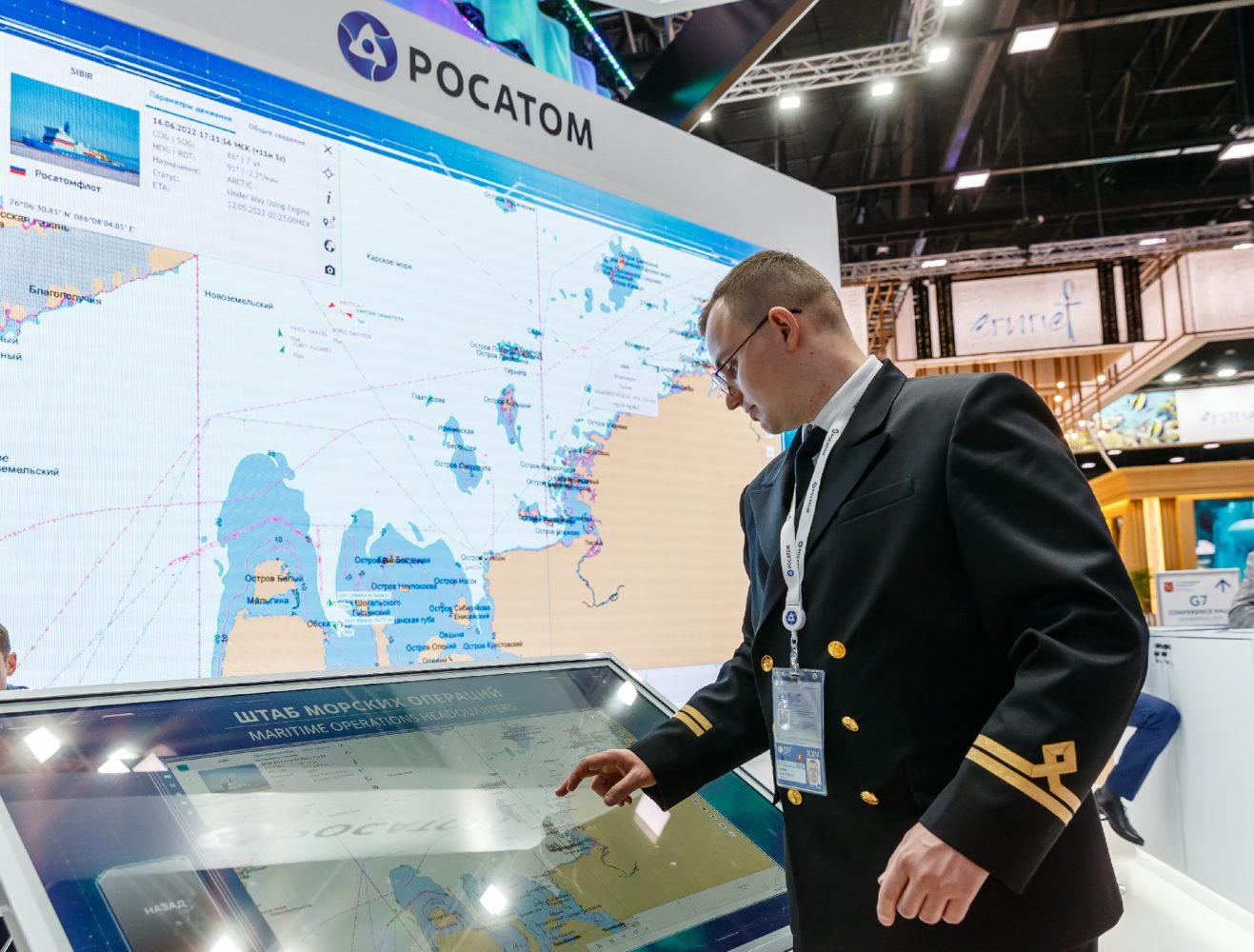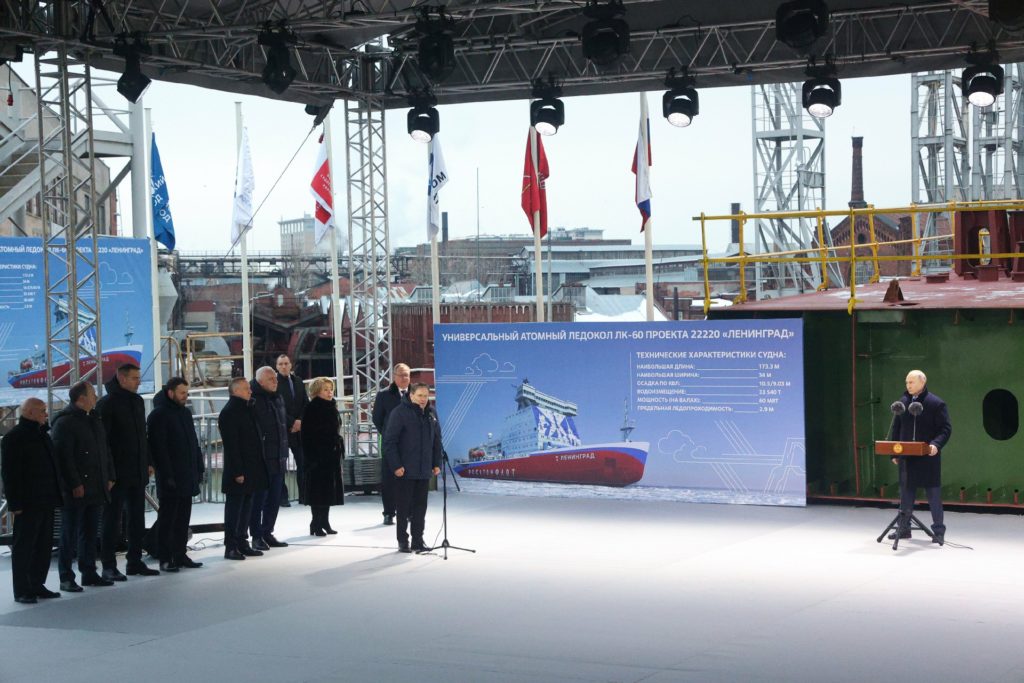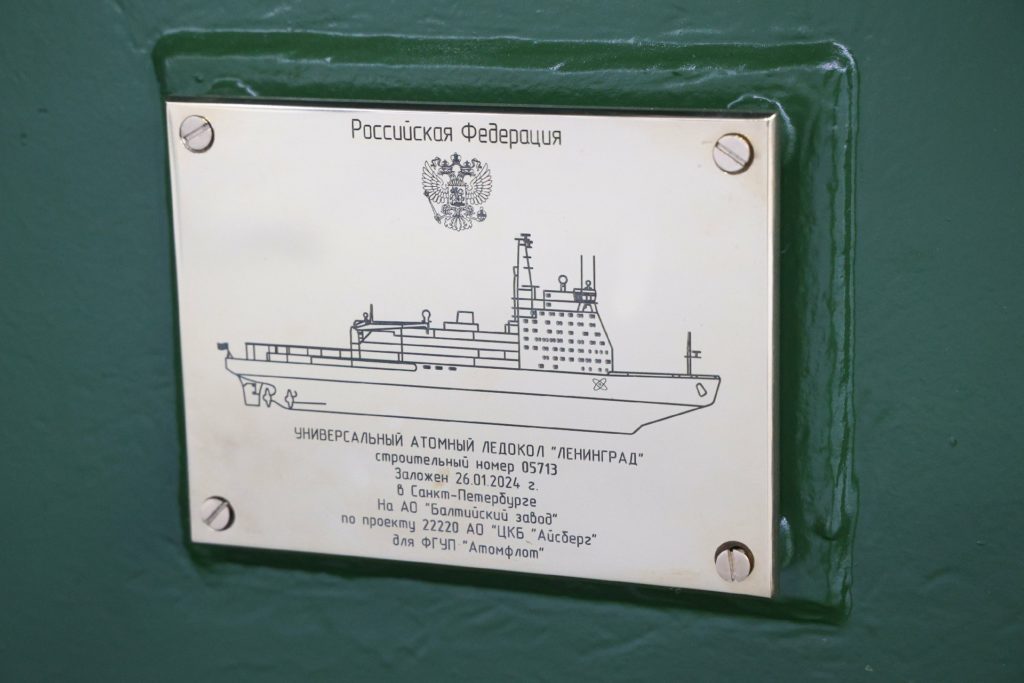
New Sea Lanes
back to contentsProviding services to freight carriers on the Northern Sea Route (NSR) has evolved into one of Rosatom’s new business dimensions. As the NSR infrastructure operator, the Russian nuclear corporation ensures safe navigation, including with icebreaker escort, builds ports and develops logistic partnerships with international companies to promote a new sea lane linking Europe and Asia.
Rosatom’s primary task is to ensure safe and regular navigation on the shortest route between the western part of Eurasia and the Pacific Ocean. The NSR length is 5,600 miles, while the full distance from Murmansk to Chinese ports via the NSR is 7,000 miles (versus 12,500 miles via Suez).
Safe navigation on the NSR is impossible without icebreakers. They ensure the delivery of cargo for major oil, gas, coal and copper mining projects in the Russian Arctic. Icebreakers break a path through the ice for tankers, gas carriers and dry cargo ships carrying their cargo westwards and eastwards. Since they are powered by nuclear energy, they do not emit fuel combustion gases and are more powerful, that is, capable of breaking through much thicker ice than diesel-electric icebreakers.
In late January, the Baltic Shipyard laid the keel of another Project 22220 icebreaker, Leningrad. Its name commemorates the courage of defenders and residents of Saint Petersburg (Leningrad in the years of World War II) during the Siege of Leningrad. The solemn keel laying ceremony was timed to coincide with the 80th anniversary of the end of siege. “Today, Russia has an unparalleled icebreaker fleet, the largest in the world. This represents our distinct competitive advantage and immense opportunities for the development of logistics and industry and creation of new jobs, as well as for the comprehensive improvement of Arctic cities and towns, implementation of global-scale projects, and international cooperation with our partners, friends and everyone who wants and is ready to work with Russia,” Russian President Vladimir Putin said at the event.

Three Project 22220 icebreakers — Arktika, Sibir and Ural — escort ship convoys on the NSR so far. Another two icebreakers, Yakutia and Chukotka, are under construction and will be commissioned in 2024 and 2026, respectively. Construction of one more icebreaker of the same design is on the plan. It will be laid down next year. Rosatom’s icebreaker fleet also includes nuclear-powered icebreakers Taimyr, Vaigach, Yamal, and 50 Let Pobedy.
Overall, cargo traffic on the NSR grew significantly, from as little as 3.93 million tonnes in 2013 to 36.254 million tonnes last year, up from the plan of 36 million tonnes. “We owe the record-high cargo traffic on the Northern Sea Route to our partners, primarily NOVATEK whose LNG accounts for more than half of the cargo carried. Gazprom Neft and LUKOIL, which redirected their freights from west to east, also played a major role in increasing the traffic. As a result, we reached our target of 36 million tonnes before the New Year,” Rosatom Director General Alexey Likhachev said.
Cargo transit also showed growth. “Cargo transit on the NSR rose back to the 2021 level and then hit a new high,” said Rosatom’s special representative for Arctic development Vladimir Panov. In 2023, cargo transit reached 2.13 million tonnes. The primary cargoes were oil, iron ore concentrate and LNG. “Transit cargoes point to the relevance of the Northern Sea Route as their growth is the most essential result for the marine logistics business,” Vladimir Panov emphasized.
International carriers also show increased interest in the Northern Sea Route. For example, the Chinese NewNew Shipping Line made eight voyages on the NSR using ice-class vessels purchased for this purpose in 2023 and transported about 100,000 tonnes of cargo between Chinese ports and Arkhangelsk, Saint Petersburg and Murmansk.

With three coastal voyages made, the Northern Sea Route now offers regular transportation between northwestern and far eastern Russian ports.
Rosatom also provides port infrastructure improvement services on the NSR and is working ahead of plans in this field. The capacity of Arctic ports has grown to reach 40 million tonnes. Rosatom has dredged the Gulf of Ob, is engaged in the construction of a coal terminal for the Syradasay coal deposit, and has signed contracts for dredging services in the Bukhta Sever port and building a cargo terminal and a berth for floating power units at Cape Nagleynyn.
The Marine Operations Headquarters (part of Rosatom) integrates all incoming information on ice and weather conditions to establish optimal routes. The number of information sources will increase as data from onboard stations and drones will be added to conventional satellite data. The monitoring stations onboard icebreakers will scan ice around the vessel on which they are installed, while drones will collect information at a distance of up to 100 km from the icebreaker.
To make the navigation on the NSR as safe and convenient as possible, Rosatom is developing a single digital service platform. It will collect and process all the NSR-related data, from weather forecasts and emergency situations to navigation permits and optimal routing.
Last year, the Marine Operations Headquarters issued 1,218 permits (1,163 in 2022). Speaking at the keel-laying ceremony for the Leningrad icebreaker, Alexey Likhachev stressed that the Northern Sea Route was of vital importance for Russia on the back of growing demand for safe and reliable transportation routes in the world. “This is exactly what we offer to our partners — a fast, safe and competitive route,” he said in conclusion.




